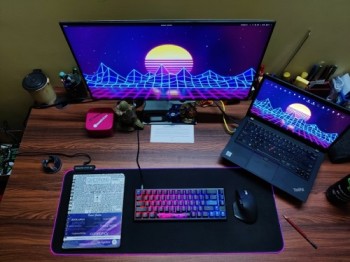Computer Monitor 101 and Which One is for You
Computer Monitor 101 and Which One is for You: Shopping around for a computer monitor can be overwhelming for anyone, even if you’ve been using a computer for decades. With numerous technologies updating screen size, resolution, LED lighting, and other features almost every quarter, picking just one can be a difficult task.
Before you learn all the monitor jargon and get confused more with the choices in front of you, here are several considerations you should think about first:
Table of Contents
What is the monitor for?
- Are you going to use it for work? What kind of work? Does it involve heavy graphics?
- Are you going to use it for gaming?
- Is the monitor going to be used as a multi-purpose monitor? If so, do you play games in your downtime?
Your answer to these questions would filter out other monitor types. For example, if you’re serious about gaming, your priority is to check out monitors with low response times and fast refresh rates. If you’re a design or video production professional, aim for a monitor with the best color accuracy.
What resolution do you need?
As a general rule, the higher resolution you aim for, the better picture quality your monitor will have. It’s that simple.
The resolution of a monitor tells you how many pixels it has in width x height format. The minimum resolution you should aim for is a 1920×1080 monitor (or as the PC industry calls “1080p,” “Full HD” or “FHD).” If you have the budget for higher resolution, such as QHD or 4k, expect to experience sharper images.
Does monitor size matter?
Many people disregard monitor size as the last factor to consider, thinking that if all the important specs are found in a particular model, then it wouldn’t matter if the size is big or small.
But you should know that monitor size is an important consideration because pixel density (or the concentration of pixels on a particular display, measured in pixels per inch or ppi) affects the quality of your images.
A large monitor with a low resolution will also have low pixel density. The recommended size is 109 pixels per inch.
What kind of Panel technology is best for me?
Panel technology is one of the biggest considerations because even if IPS monitors have good color quality and faster response times, it still wouldn’t be enough for a professional gamer.
There are 4 major types:
- TN (Twisted Nematic): Cheap, but with poor image quality, especially when viewing from the side. They’re the oldest of the bunch and are very affordable.
- IPS (In-Plane-Switching): Good image quality and great visual display, fast response times. Used mostly by people who multitask and use the computer for work, games, and everything in between. For a unique monitor experience, go with a touchscreen monitor (usually built with IPS) since this technology doesn’t cause trailing distortions even if you press your finger on the screen.
- VA (Vertically Aligned): This type of panel has the best of both worlds of TN and IPS – it has rich colors, high refresh speeds, and awesome contrasts (darkest of black colors, whitest of whites), but they suffer from long latency (which blurs images of gamers) and VA monitors can be super expensive.
- OLED: This type of monitor can wow any kind of user. This technology allows users to control each pixel individually, so colors are not “approximate” but actually true colors.
You might also like: How to setup dual monitor on Windows 10
Do the refresh rate and response time of a monitor matter to me?
Refresh rate is measured in hertz (Hz) and refers to the number of times your monitor updates new information per second, so if a monitor has 75 Hz (it means it refreshes 75 times per second.
The ideal refresh rate depends on what you’ll be using it for. Gamers require at least 75 Hz, but professional gaming monitors are 120 Hz minimum. The bigger the refresh rate, the better images you’ll receive and the video would be smoother and less choppy. However, if you’re not going to use the monitor for gaming, a refresh rate of 60 Hz would be enough for most computing tasks.
When it comes to response time (or the time it takes for a monitor to change individual pixels from black to white), your best bet is to go for a shorter response time (about 5ms). If you’re going to use the monitor for viewing and gaming, long response times would result in blurring. High-end gaming monitors have up to 0.5ms response time, but they come at a premium cost.
Other Considerations
There are also layouts and set-ups to consider. Do you want flat vs. curved monitors? Curved monitors are advertised as a new type of monitor that would give you a better viewing experience due to the larger field of view, but if you have prescription glasses, this may not be ideal for you. Some people even feel dizzy working on one.
How about ultra-wide vs. multi-monitor setups?
The answers to these boil down to personal preference, but would affect your daily computer use nonetheless, so make sure to consider them as well.
Follow Us On:
